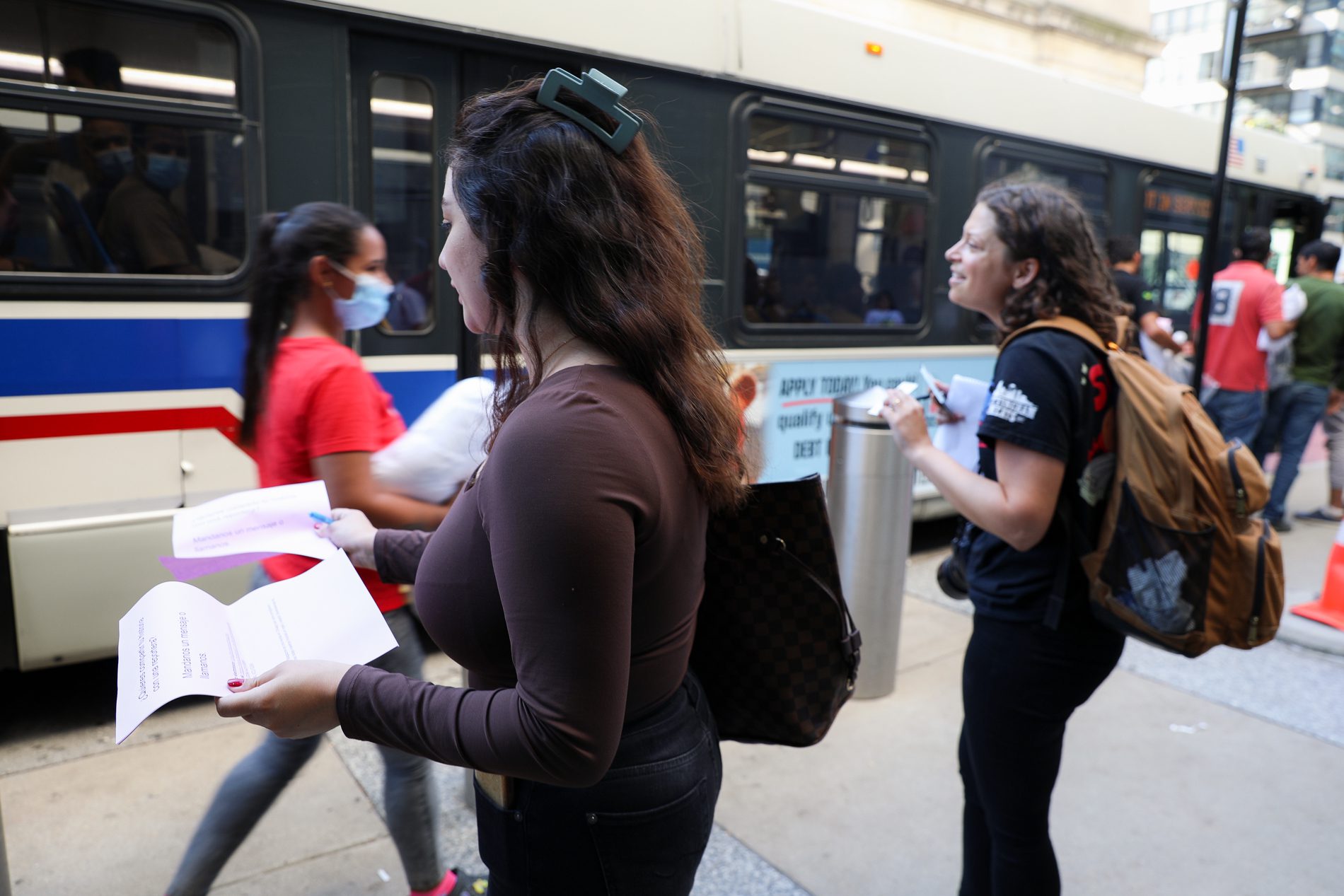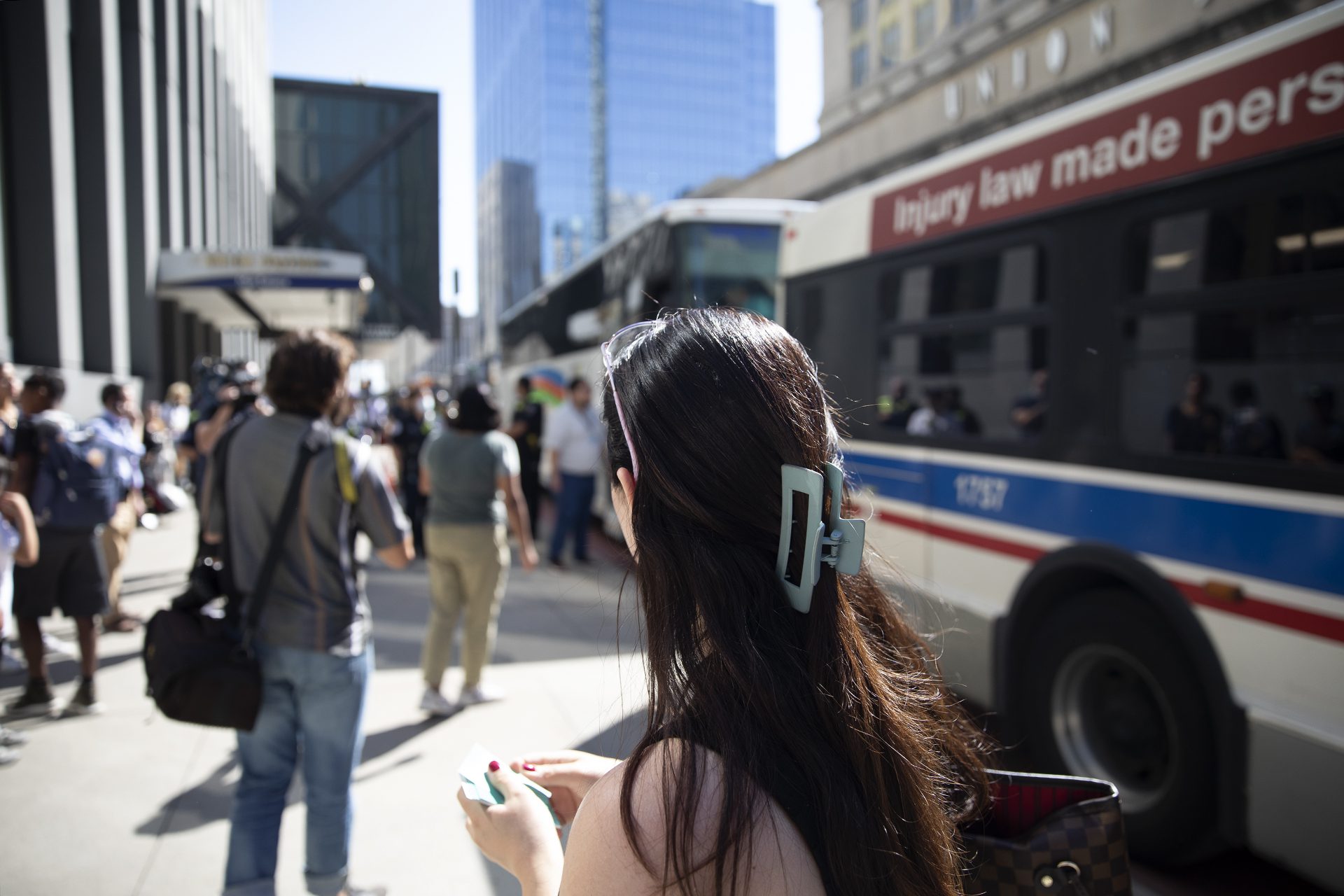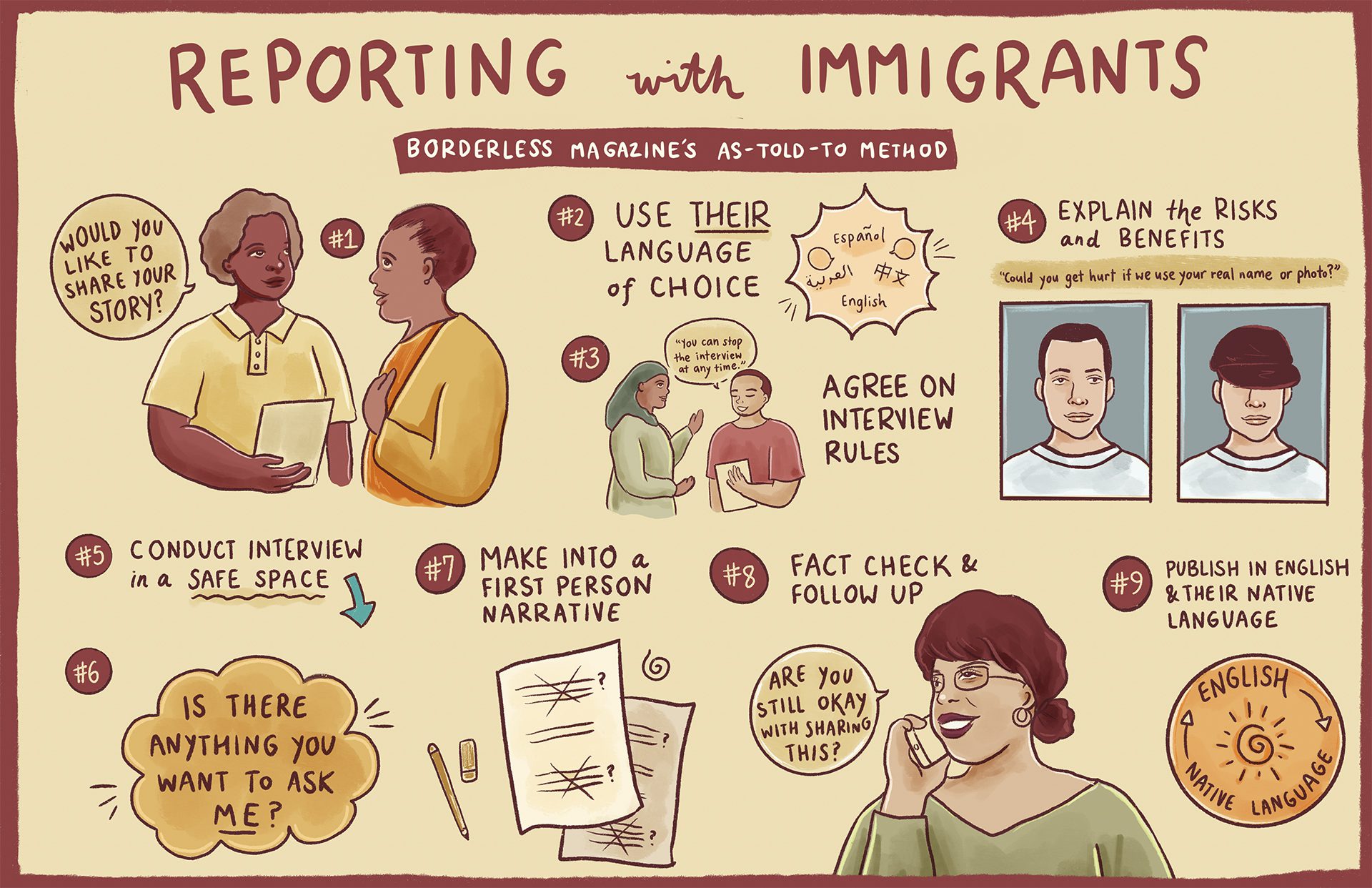 Colin Boyle/Block Club Chicago
Colin Boyle/Block Club ChicagoWhy we worked on these stories, how our collaboration with Block Club Chicago came together and what we learned.
Last week we published our series, After the Buses, a three-month-long project where Borderless Magazine and Block Club Chicago reporters followed 10 out of the more than 3,700 migrants who arrived in Chicago from Texas as part of Texas’ Operation Lone Star campaign.
This series emerged from months of interviews and conversations with migrants, lawyers and community organizers. Our goal with After the Buses was to help Chicagoans better understand the condition and needs of recently arrived migrants.
Want to receive stories like this in your inbox every week?
Sign up for our free newsletter.

In late August, Texas Gov. Greg Abbott began putting people who had arrived at the U.S. border onto buses and sending them to Democrat-led cities in an effort to pressure the federal government to enact stricter immigration restrictions. From early on, Borderless journalists camped out at Union Station in Chicago, where some of those people were sent, alongside other reporters and community organizers.
Both Block Club Chicago and Borderless were reporting on this at the same time and in the same place, so we decided to collaborate and report more contextual stories that would highlight the realities migrants were facing after arriving in Chicago. We were concerned that most of the media would stop covering the migrants after a few weeks, and we wanted to go beyond the headlines and follow migrants long after the news cycle had moved on.

We wanted to know who and how the newly arrived migrants were, where they came from and what they needed. We wanted to know what they were hoping to find when they got here. And we hoped maybe we could help them find it by sharing their stories.
How We Came Together
“It started the first day that these buses started showing up at Chicago’s Union Station. I and my colleague Colin had kind of tapped into it trying to figure out what the city’s response was, find out where these people are staying and how they are getting resources for them, like food, water and clothes. Colin [Boyle] and I and Diane [Bou Khalil] and Jesus [Montero] spent a couple afternoons at Union Station greeting people and immediately we knew we wanted to start on a broader story, something bigger, which eventually developed into After the Buses,” Block Club Chicago’s Madison Savedra explained during a discussion panel on the project.
After The Buses Panel With Block Club and Borderless
Block Club Chicago
In those early days, Borderless reporters went to Union Station and gave out flyers to newly arrived migrants that said in Spanish, “Do you want to share your story with a reporter? Send us a message or call us.” Many of the migrants didn’t have access to a cell phone and didn’t have a phone number. The idea was that when they did get access to service, Wi-Fi or a stable phone number, and were ready to talk, they might still have our information through the flyer.
Borderless continued our comprehensive reporting, bringing context and understanding to what was happening while we worked on connecting with our sources.
What We Learned
Migrants Borderless spoke with and advocates who worked with them were concerned about long-term housing and employment support, especially because most of the migrants would need to apply for asylum. The asylum process can be long and difficult for many to navigate on their own. So our Contributing Reporter Chelsea Verstegen looked into the state of legal resources and found a shortage of immigration attorneys who handle asylum cases.
Most of the migrants Borderless spoke with are from Central and South America, mainly from Venezuela, a country that has struggled with a political and severe economic crisis resulting in food and medicine shortages, surging inflation, and more. Borderless spoke with the cofounder of the Illinois Venezuelan Association, Ana Gil Garcia, who has been at the forefront of the situation in Chicago, helping migrants with their immediate needs, such as food and clothing. In our story, Gil Garcia explained why 25% of Venezuela’s population has left Venezuela and how Chicagoans are welcoming Venezuelan migrants.
Read More of Our Coverage
Meanwhile, Borderless recruited reporters and photojournalists who spoke Spanish and could also talk to people on the spot. We spoke to people while they were getting on another bus to Salvation Army shelters or waiting for friends they knew in the city to come meet them. Travelers were tired, drained, confused and needed rest.
In our earlier reporting in September, we spoke to a Venezuelan family of three, Keibel, 26, and Eglianny, 19, and their toddler Angel, 2, who had been on a three-month journey from Venezuela to Chicago. They trekked by foot and bus across eight countries – Venezuela, Colombia, Panama, Costa Rica, Nicaragua, Honduras, Guatemala and Mexico – to seek asylum in the United States. After entering the United States, they were bused from Texas to Chicago.

Buses loaded with migrants who had arrived in Texas continued coming to Chicago, and we received messages from people who wanted to share their stories with us after seeing our flyers.
Centering the People in our Stories
Borderless reported its stories using our As-Told-To method, because we wanted to give the migrants the opportunity to tell their own stories, in their own voice. Block Club Chicago also took a human-centered approach to their reporting, choosing to produce profiles of the migrants they interviewed. All of the interviews we did for this series were in Spanish, and both news outlets relied on our Spanish-speaking reporters and photojournalists to connect us with the people who had reached out to us.

Borderless contributing reporter Ambar Colón said the work she did for After the Buses was much different than previous Spanish-language reporting she has done.
“I do a lot of work in Spanish already with La Voz. But this was characteristically different and I like the approach that we did. I’m just taking a lot of great things from this experience that I will never forget,” said Ambar Colón.
One thing that differed in our approach from other news outlets was our commitment to earning the trust of our growing community by taking the time to learn about their lives, homes, why they left them and what that took.
Block Club photojournalist Colin Boyle recalls an emotional moment he had with one of the men featured in After the Buses.
“I was sitting down with David, my source, having a coffee, just doing some fact checking and follow up questions and ended up translating the story [I had written] into Spanish and was reading it to him. At once, he just started crying. To hear his own story and his own journey through a story and back in his home language, into his native language. It was really powerful,” said Block Club Chicago’s Colin Boyle.
Impact
We have been overwhelmed by the response from our readers, community members and newly-arrived migrants about our series After the Buses. In the days following publication, we got a mention from the Los Angeles Times who called Borderless Magazine and Block Club Chicago “must-read” publications. And many of the people we interviewed for After the Buses said they were grateful to share their stories. Denis “Omar” Covis sent us a message to say, “Thank you for sharing my story. I hope it helps me find a good job.”
We also heard from Block Club that the series inspired community members to collect and donate 300 boots for Venezuelan migrants. We have been receiving many emails from people asking how they can help newly arrived migrants this winter.
Special thanks go out to our Spanish-speaking reporters and photojournalists Colin Boyle, Ambar Colón, Alex V. Hernandez, Jesus J. Montero, Madison Savedra, Jonathan Aguilar and Enrique Reyes for their work on this series.

Bring power to immigrant voices!
Our work is made possible thanks to donations from people like you. Support high-quality reporting by making a tax-deductible donation today.
